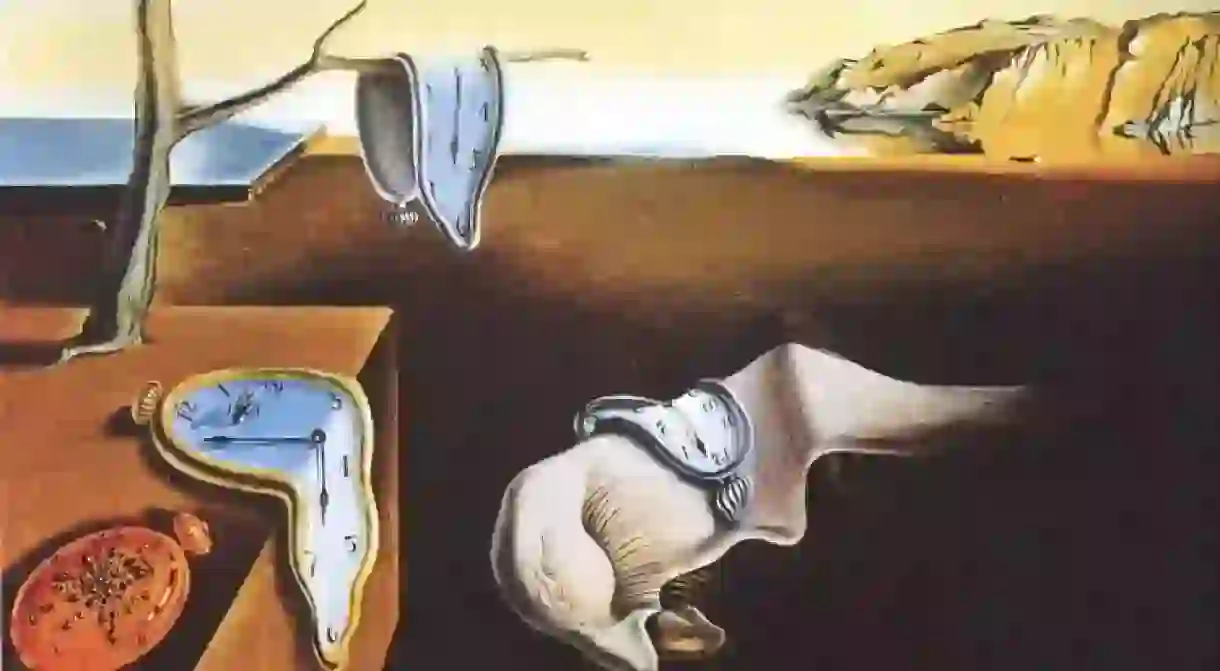A Salvador Dalí Guide to the Girona Province

Salvador Dalí is one of the most recognised artists of the modern day, and his unique surrealist style is loved by many. Hailing from the Girona Province in Catalonia, Spain, Dalí lived many years of his life in the region and left his mark here through museums, houses and castles. Here’s our guide to Salvador Dalí’s Girona.
Figueres
Begin your Salvador Dalí tour of the Girona Province in the small town of Figueres, where the artist was born on May 11, 1904. Today, Figueres’ main claim to fame is that it’s home to the Salvador Dalí Theatre-Museum. A quirky building, designed by the artist himself from 1960 to 1974, it is covered in strange yellow blobs and topped with white eggs and golden figurines. Dalí actually had his first public exhibition at the Municipal Theatre here at age 14, which later became his own museum. Today, the museum is one of the best collections of Dalí’s work, and features not only his large-scale paintings, but also his sketches, sculptures and uniques designs. Figueres was also where the artist died at the age of 84, of heart failure. His funeral was held at the Teatro-Museo, and he is also buried in a crypt there.

Cadaqués
The next point on your tour takes you to the charming fishing town of Cadaqués, some 30 kilometres northeast of Figueres. Dalí had a special relationship with Cadaqués, both as a child and as an adult. When he was young, his family had a summer home in Cadaqués and it was there that he first started painting. The landscapes around the town, especially the unique rock formations and the Cap de Creus Natural Park, particularly inspired him. In his later years, Dalí returned to Cadaqués many times with his wife Gala, and loved it so much that he decided to buy a house in neighbouring Port Lligat.

Port Lligat
Just along the shoreline from Cadaqués is the tiny village of Port Lligat and the next stop on your Dalí tour. Dalí moved to Port Lligat in 1930 and lived in an old fisherman’s cottage right on the beach. Over the next 40 years, on and off, he and his wife Gala dedicated much of their time to renovating the house, filling it with Dalí’s unusual style of art, odd curios and antique pieces that Gala picked out, and even Dalí’s own furniture designs, such as his giant lips sofa. Today, his house has become the Salvador Dalí House Museum Port Lligat, and visitors can see the house just how it was when the artist lived there. As the museum has limited capacity, you need to book several weeks in advance in order to visit.

Púbol
The last stop on your tour takes you inland to the small village of Púbol, approximately one hour’s drive south, near the city of Girona. The village is home to the Gala Dalí Castle, where Dalí and his wife bought their second home. The original castle dates back to the 11th century and was in a bad state of disrepair when they bought it in 1969. Dalí designed the castle to be a continuation of his Port Lligat home, as well as dedication to his muse – Gala.
Dalí said of the castle: “I needed to offer Gala a case more solemnly worthy of our love. That is why I gave her a mansion built on the remains of a 12th-century castle: the old castle of Púbol in La Bisbal, where she would reign like an absolute sovereign, right up to the point that I could visit her only by hand-written invitation from her. I limited myself to the pleasure of decorating her ceilings so that when she raised her eyes, she would always find me in her sky.”
The castle opened to the public as a museum in 1996, and today visitors can see it the way Dalí envisaged it for his wife. After Gala’s death in 1982, Dalí moved into the castle full-time and fell into a deep depression. Just two years later, however he was severely injured in a fire and confined to a wheelchair – no longer able to look after himself, friends and patrons brought him back to Figueres to live out his final days at the Theatre Museum.














